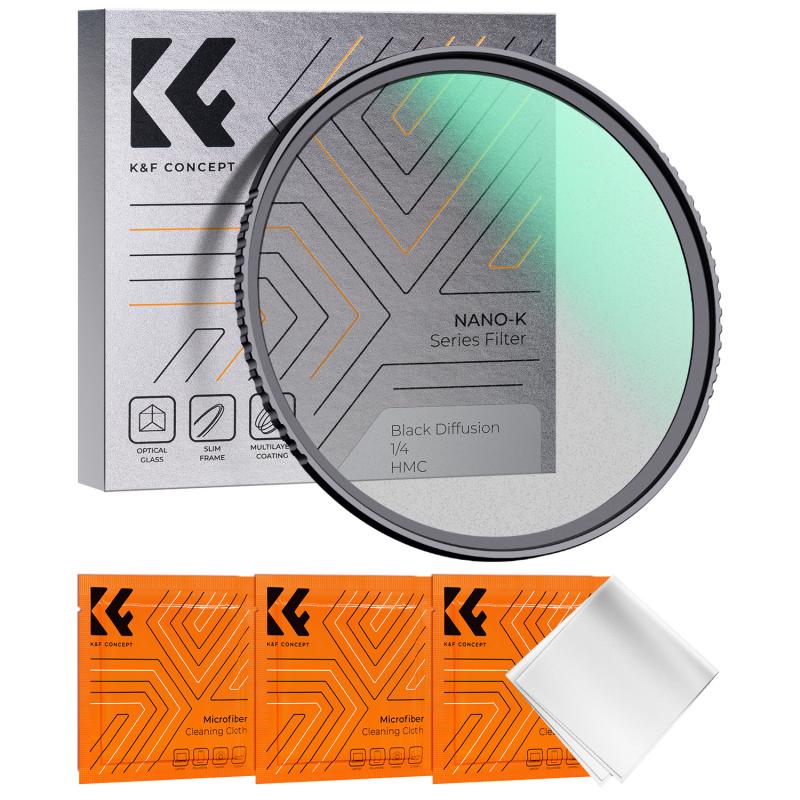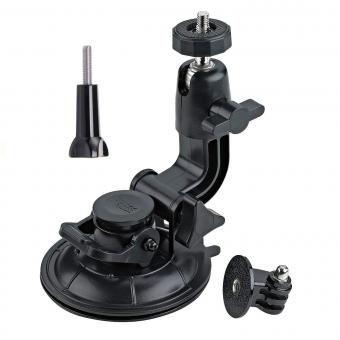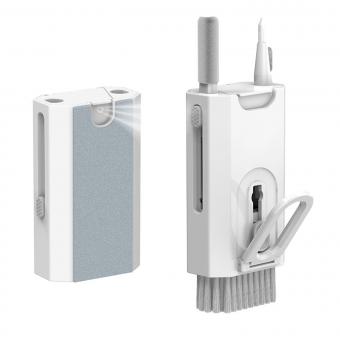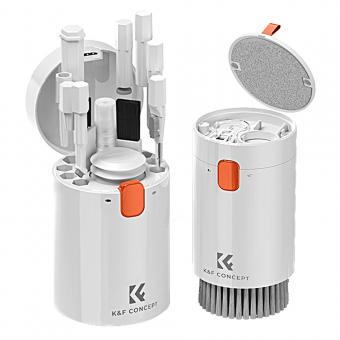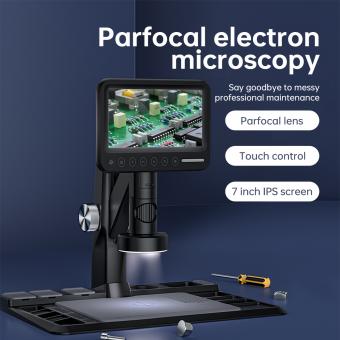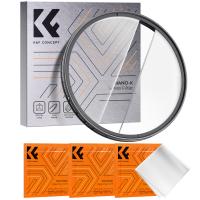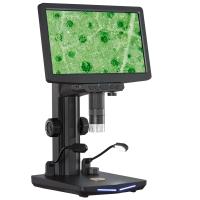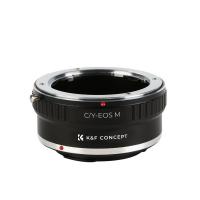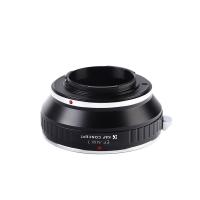How To Clean Immersion Oil From Microscope ?
To clean immersion oil from a microscope, first, remove any excess oil using a lint-free cloth or tissue. Then, use a cleaning solution specifically designed for microscope lenses. Apply a small amount of the solution to a clean, lint-free cloth and gently wipe the lens in a circular motion. Be careful not to apply too much pressure or use abrasive materials that could damage the lens. Finally, use a dry cloth or tissue to remove any remaining residue. It is important to follow the manufacturer's instructions and recommendations for cleaning and maintenance to ensure the longevity and performance of the microscope.
1、 Use a cleaning solution specifically designed for removing immersion oil.
To clean immersion oil from a microscope, it is important to use a cleaning solution specifically designed for this purpose. Immersion oil is a high-viscosity oil that is used to improve the resolution and clarity of microscope images. However, it can be difficult to remove if not cleaned properly.
One effective method is to use a cleaning solution that is specifically formulated to dissolve immersion oil. These solutions are designed to break down the oil and make it easier to remove from the microscope lens. They are typically available from scientific supply companies or microscope manufacturers.
To clean the immersion oil, first, ensure that the microscope is turned off and unplugged. Then, apply a small amount of the cleaning solution to a clean, lint-free cloth or lens paper. Gently wipe the lens in a circular motion, being careful not to apply too much pressure. Repeat this process until the immersion oil is completely removed.
It is important to note that using the wrong cleaning solution or applying too much pressure can damage the microscope lens. Therefore, it is crucial to follow the manufacturer's instructions and use a solution specifically designed for removing immersion oil.
In addition to using a cleaning solution, it is also recommended to regularly clean the microscope lens after each use to prevent the buildup of immersion oil. This can help maintain the quality and longevity of the microscope.

2、 Gently wipe the oil off with a lint-free cloth.
To clean immersion oil from a microscope, it is important to handle the process with care to avoid damaging the lens or other delicate parts. The traditional method involves gently wiping the oil off with a lint-free cloth. However, it is worth noting that there have been advancements in microscope cleaning techniques that may offer more effective results.
When using the traditional method, start by removing excess oil with a dry lint-free cloth. Be cautious not to apply too much pressure, as this can scratch the lens. Next, dampen a clean cloth with a small amount of lens cleaning solution or isopropyl alcohol. Gently wipe the lens in a circular motion, ensuring that the cloth is not too wet. Finally, use a dry cloth to remove any remaining residue.
While this method has been widely used, some experts now recommend using specialized lens cleaning pens or lens cleaning solutions specifically designed for microscope lenses. These products are formulated to effectively remove oil and debris without causing damage. Lens cleaning pens typically have a soft brush on one end to remove loose particles and a cleaning tip on the other end to remove oil and smudges.
It is important to follow the manufacturer's instructions when using these products, as they may vary. Generally, the process involves gently brushing away loose particles and then using the cleaning tip to remove the oil. Some lens cleaning solutions may also require rinsing with distilled water or a lens cleaning solution after application.
In conclusion, while the traditional method of gently wiping the oil off with a lint-free cloth is still effective, there are newer techniques and products available that may provide better results. It is essential to handle the cleaning process with care and follow the manufacturer's instructions to ensure the longevity and optimal performance of the microscope.
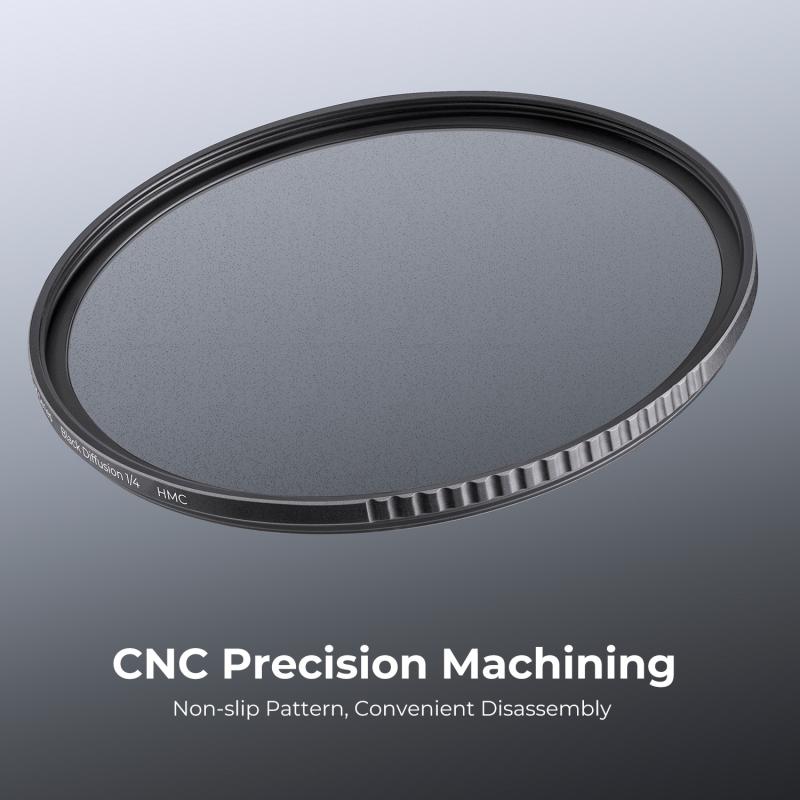
3、 Rinse the objective lens with distilled water.
To clean immersion oil from a microscope, rinsing the objective lens with distilled water is a good starting point. However, it is important to note that simply rinsing with water may not completely remove the oil, especially if it has dried or hardened. Therefore, it is recommended to follow a more thorough cleaning process to ensure the lens is properly cleaned.
Here is a step-by-step guide on how to clean immersion oil from a microscope:
1. Start by removing any excess oil from the objective lens using a lens tissue or a lint-free cloth. Be gentle to avoid scratching the lens.
2. Next, dampen a clean lens tissue or cloth with a small amount of lens cleaning solution. Make sure to use a solution specifically designed for microscope lenses, as other cleaning agents may damage the lens coatings.
3. Gently wipe the lens in a circular motion, starting from the center and moving towards the edges. Avoid applying excessive pressure to prevent any potential damage.
4. If the oil is stubborn and does not come off easily, you can use a small amount of lens cleaning solution directly on the lens and let it sit for a few minutes. This will help to loosen the oil.
5. After allowing the cleaning solution to work, gently wipe the lens again with a clean lens tissue or cloth.
6. Finally, rinse the lens with distilled water to remove any remaining cleaning solution or oil residue. Use a gentle stream of water or a spray bottle to avoid excessive force.
7. Once rinsed, use a clean, lint-free cloth to gently dry the lens. Make sure it is completely dry before reattaching it to the microscope.
It is important to note that different microscopes and lenses may have specific cleaning instructions provided by the manufacturer. Therefore, it is always recommended to consult the microscope's user manual or contact the manufacturer for specific cleaning guidelines.
In conclusion, while rinsing the objective lens with distilled water is a good initial step, a more thorough cleaning process is necessary to completely remove immersion oil from a microscope lens.

4、 Dry the lens thoroughly using a clean, dry cloth.
To clean immersion oil from a microscope lens, it is important to follow a careful and thorough process to avoid damaging the lens or affecting its performance. Here is a step-by-step guide on how to clean immersion oil from a microscope:
1. Start by removing any excess oil from the lens using a clean, dry cloth or lens paper. Gently wipe the lens in a circular motion, being careful not to apply too much pressure.
2. Next, dampen a clean, lint-free cloth or lens paper with a small amount of lens cleaning solution. It is important to use a solution specifically designed for cleaning microscope lenses, as other cleaning agents may damage the lens coating.
3. Gently wipe the lens with the damp cloth or lens paper, again using a circular motion. Be sure to cover the entire surface of the lens, paying extra attention to any areas with visible oil residue.
4. If the immersion oil is particularly stubborn or has dried onto the lens, you may need to repeat the cleaning process or use a slightly more aggressive cleaning solution. However, be cautious and refer to the manufacturer's guidelines to ensure you do not damage the lens.
5. Once the lens is clean, use a separate dry cloth or lens paper to dry it thoroughly. Ensure that no moisture or cleaning solution remains on the lens, as this can cause smearing or damage.
6. Finally, inspect the lens under a light source to ensure it is completely clean and free of any residue. If necessary, repeat the cleaning process until the lens is spotless.
It is worth noting that different microscopes and lenses may have specific cleaning instructions provided by the manufacturer. Therefore, it is always advisable to consult the microscope's user manual or contact the manufacturer for any specific cleaning recommendations.
In recent years, there have been advancements in lens cleaning technology, such as the use of ultrasonic cleaners or specialized lens cleaning kits. These methods can provide a more thorough and efficient cleaning process. However, it is important to ensure that these methods are compatible with the specific microscope lens being cleaned and to follow the manufacturer's instructions carefully.
In conclusion, cleaning immersion oil from a microscope lens requires a delicate and meticulous approach. By following the steps outlined above and considering any specific instructions from the manufacturer, you can effectively remove the oil and maintain the performance and longevity of your microscope lens.
